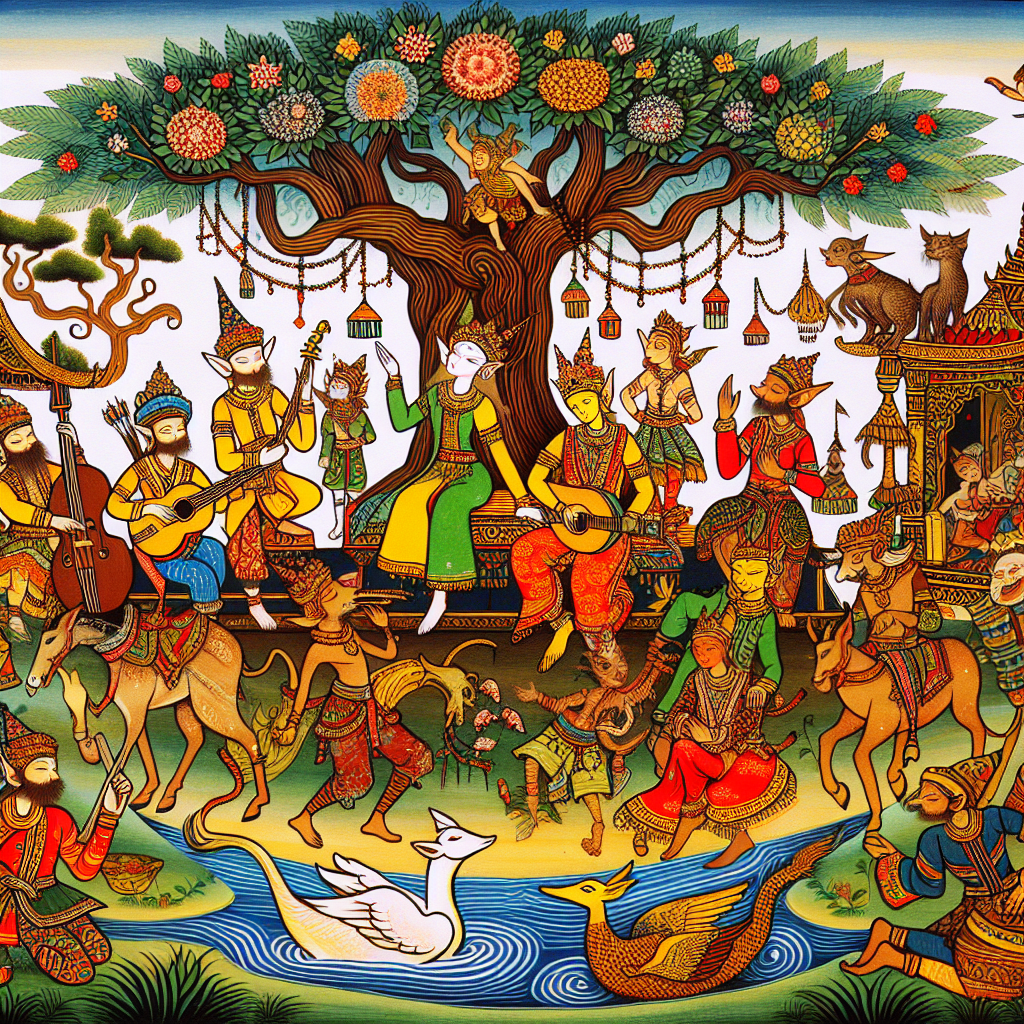Warisan Budaya dalam Cerita Rakyat dan Dongeng: Menceritakan nilai-nilai, tradisi, dan kearifan lokal secara turun-temurun melalui narasi yang menarik.
Warisan Budaya dalam Cerita Rakyat dan Dongeng
-
Table of Contents
Introduction

Indonesia is a country rich in cultural heritage, and one of the ways this heritage is preserved and passed down through generations is through traditional folktales and legends. These stories, known as “cerita rakyat” or “dongeng,” not only entertain but also serve as a means to educate and instill moral values in children. They are an integral part of the Indonesian cultural fabric and reflect the diverse traditions and beliefs of the archipelago. In this article, we will explore the significance of cultural heritage in Indonesian folktales and the role they play in preserving and promoting the country’s cultural identity.
The Importance of Cultural Heritage
Cultural heritage encompasses the customs, traditions, beliefs, and artifacts that are passed down from one generation to another. It is a vital aspect of a nation’s identity and serves as a link between the past, present, and future. In Indonesia, cultural heritage plays a crucial role in shaping the country’s diverse society and fostering a sense of belonging among its people.
Indonesia is home to hundreds of ethnic groups, each with its own unique cultural practices and traditions. These cultural expressions are often deeply rooted in the local folklore and legends that have been passed down through generations. By preserving and promoting these stories, Indonesia can celebrate its rich cultural diversity and ensure that future generations remain connected to their roots.
Preserving Cultural Heritage through Folktales
Folktales and legends are an essential part of Indonesia’s cultural heritage. They are often used as a medium to convey moral values, teach life lessons, and pass on traditional knowledge. These stories are typically set in a mythical or historical context and feature characters that embody certain virtues or vices.
One example of a popular Indonesian folktale is “Bawang Merah Bawang Putih” (Shallot and Garlic). This story teaches children about the importance of honesty, kindness, and the consequences of jealousy. Through the characters of Bawang Merah and Bawang Putih, children learn the value of treating others with respect and the rewards of virtuous behavior.
Another well-known folktale is “Malin Kundang,” which tells the story of a young man who abandons his mother after becoming wealthy. The story serves as a cautionary tale against greed and the importance of filial piety. By sharing these stories with younger generations, Indonesian culture and values are preserved and passed on.
Unifying a Diverse Nation
Indonesia is a vast archipelago with over 17,000 islands and a population of more than 270 million people. The country is home to various ethnic groups, languages, and religions. Despite this diversity, Indonesian folktales serve as a unifying force, transcending regional and cultural differences.
Folktales often feature universal themes and values that resonate with people from different backgrounds. They promote empathy, understanding, and tolerance among Indonesians by highlighting shared values and experiences. These stories remind Indonesians of their common heritage and foster a sense of national identity.
Regional Variations in Folktales
While Indonesian folktales share common themes and moral lessons, there are also regional variations that reflect the unique cultural practices and beliefs of different ethnic groups. Each region in Indonesia has its own set of folktales that are passed down through generations.
For example, in West Java, the Sundanese people have a rich tradition of storytelling. Their folktales often revolve around the themes of nature, agriculture, and the relationship between humans and the supernatural. One popular Sundanese folktale is “Sangkuriang,” which tells the story of a young man who unknowingly falls in love with his own mother. This tale reflects the Sundanese people’s deep connection with nature and their belief in the power of ancestral spirits.
In Bali, the Hindu-majority island, folktales often draw inspiration from the ancient Hindu epics, such as the Ramayana and Mahabharata. These stories are reinterpreted and localized to reflect Balinese culture and values. Balinese folktales often feature mythical creatures, gods, and goddesses, and convey moral lessons related to spirituality and devotion.
Preserving and Promoting Indonesian Folktales
In recent years, there has been a growing recognition of the importance of preserving and promoting Indonesian folktales. Efforts have been made to collect, document, and publish these stories to ensure their survival for future generations.
Various organizations and institutions in Indonesia are dedicated to the preservation of cultural heritage, including folktales. They conduct research, organize storytelling events, and publish books that compile these stories. Additionally, the Indonesian government has included folktales in the national curriculum to ensure that children are exposed to their cultural heritage from an early age.
Furthermore, technology has played a significant role in promoting Indonesian folktales. With the rise of digital platforms and social media, these stories can reach a wider audience, both within Indonesia and internationally. Online platforms and mobile applications have been developed to make folktales more accessible and engaging for children, ensuring that these stories continue to be cherished and passed on.
Conclusion
Indonesian folktales and legends are not merely stories; they are a reflection of the country’s rich cultural heritage. These tales serve as a means to preserve and promote Indonesia’s diverse traditions, beliefs, and values. By passing down these stories to future generations, Indonesia ensures that its cultural identity remains intact and that its people remain connected to their roots. The preservation and promotion of Indonesian folktales are crucial in fostering a sense of national identity, promoting understanding and tolerance, and celebrating the country’s cultural diversity.







